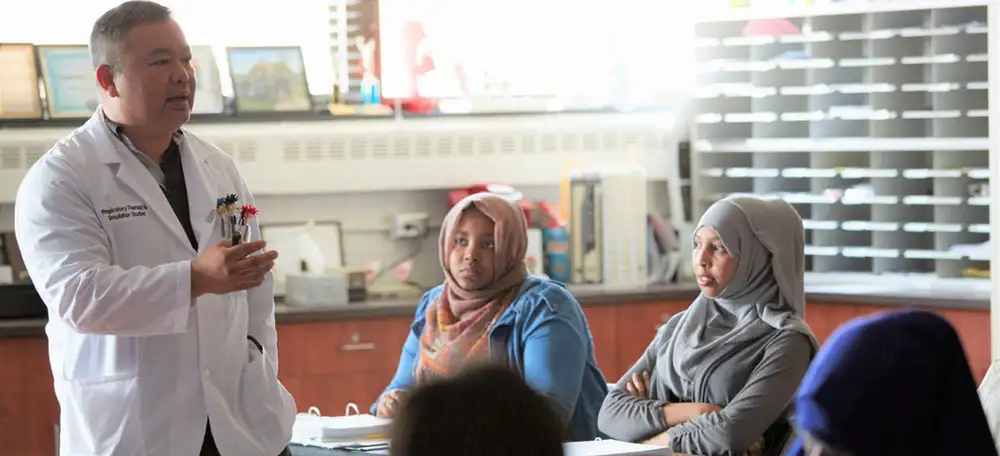A Diverse and Inclusive Workforce Is Key to Student Success

By Eric Davis, Vice Chancellor for Human Resources, Minnesota State
Josefina Landrieu, Vice President for Equity and Inclusion, Metro State University
November 30, 2022
“Educating people of all backgrounds, beliefs, and cultures takes a diverse workforce.”
- Higher Education Recruitment Consortium
Diversity in higher education is an asset, an added value to the educational experience for all students and it should be celebrated as such. Diversity also goes beyond representation among students, staff, and faculty; it extends to the spaces we create within and outside the classroom.
Students attending the colleges and universities of Minnesota State have been rapidly diversifying. Students come to our colleges and universities with a wide array of identities and experiences. In fact, Minnesota State serves more Black and Indigenous students, as well as students of color, at our colleges and universities than all other higher education providers in Minnesota combined.
It is also undeniable that a diverse workforce has a positive impact on student outcomes. This is especially true in higher education where research suggests that a diverse student body learns and performs better when taught by faculty who share similar backgrounds. Black, Indigenous, and other students of color experience better academic outcomes when taught by faculty of color (Fairlie, Hoffman, & Oreopoulous, 2014).
Making a meaningful difference in the lives of students and seeing the impact of diversity, equity, and inclusion (DEI) strategies requires leaders to ensure inclusive and welcoming campus cultures within their colleges and universities. A welcoming and inclusive climate will allow for a diverse workforce to thrive and, as a result, have a positive impact on the lives of students.
When we examine trends in the compositional diversity of our Minnesota State workforce, we see evidence our intentional and targeted recruiting efforts, combined with demographic changes in the overall labor market, has combined to contribute to a more racially diverse Minnesota State workforce over the past five years. This positive trend is reflected in every role from service and support staff to instructional faculty and administrators, but there is still much work to be done.
Nevertheless, our work to recruit, hire, and retain a workforce that is representative of our students is not finished. The Minnesota State Equity Scorecard reflects evident gaps in retention by race. The five-year retention rate for white employees hired in 2017 is 56%, while the retention rate for Black, Indigenous, and people of color hired in 2017 is just 40%. While we often focus our attention on inclusive recruitment and hiring, this data highlights the importance of inclusive and effective retention strategies to achieve our workforce diversity and Equity 2030 goals.
Across Minnesota State, HR and Equity and Inclusion professionals actively collaborate with campus leaders, faculty, staff, and unions to improve both recruiting and retention outcomes. One successful collaboration is the ongoing work of the State University Working Group on Equity and Inclusion (SUWEI) which has advanced and emphasized equity and inclusion work in recruiting and retention to include the work of mentoring, advising, and supporting equitable outcomes for students, staff, and faculty. Another successful collaboration established a system-coordinated pool of diverse, well-qualified applicants for college peace officer and public safety skills-training programs.
The Minnesota State Office of Equity and Inclusion, in partnership with Human Resources, supports the expansion of Employee Resource Groups (ERGs) across Minnesota State to provide employees with an enhanced sense of community as well as support opportunities to network with peers, gain a stronger sense of belonging, and experience mentorship opportunities. In addition, the offices developed a new campus climate assessment framework and toolkit which colleges and universities will use to measure and address issues impacting campus climate beginning in the Spring of 2023.
Fruitful efforts have also been present among our colleges and universities. For example, since its inception at Metro State University, the Faculty of Color Mentorship Program has been expanded to serve Black, Indigenous, and other faculty of color across several colleges in the system. This program provides individual and group mentoring, networking, and professional development opportunities for its members.
Achieving meaningful results from diversity initiatives requires more than recruiting a broader range of students and faculty. Working together, leaders across Minnesota State, and in every role, have a shared responsibility to ensure everyone on their campuses feels a strong sense of belonging and that they can contribute to the campus community.
Citation:
Fairlie, R., Hoffman, F., & Oreopoulous, P. (2011). A community college instructor like me: Race and Ethnicity Interactions in the Classroom. American Economic Review, 104.